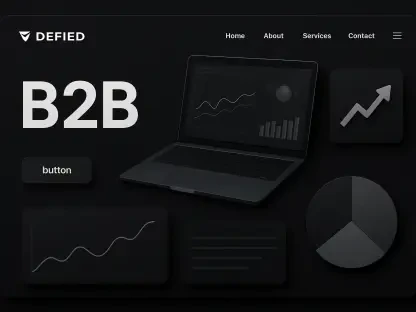Introduction
Black Friday stands as a cornerstone of retail success, marking a critical opportunity for businesses to boost revenue during the busiest shopping period of the year, and in 2024, U.S. consumers spent an astonishing $10.8 billion online on a single day. Meanwhile, Shopify merchants generated $11.5 billion over the Black Friday Cyber Monday (BFCM) weekend, reflecting a 24% increase from the prior year. These figures highlight the immense potential for profit, as well as the risk of falling behind without a solid plan. This timeline article provides a structured, chronological guide through an 8-week preparation and execution process, incorporating proven strategies to maximize sales during this pivotal retail event. By following this roadmap, businesses can position themselves to capitalize on consumer trends and drive exceptional results in 2025.
Black Friday Preparation and Execution Timeline
Weeks 1-2: Research & Planning
The journey to a successful Black Friday begins with meticulous research and strategic planning. During these initial weeks, the focus is on analyzing data from the previous year to identify peak traffic hours, top-selling products, and patterns of cart abandonment. This historical insight serves as a foundation for predicting customer behavior and shaping the upcoming campaign. Beyond past performance, it’s essential to explore current market trends using tools like Exploding Topics to pinpoint products with sustained growth over 3-6 months, avoiding short-lived fads. Additionally, creating an evergreen landing page optimized for “Black Friday [specific niche]” searches helps capture early SEO traffic before competition intensifies. These steps ensure that inventory decisions and marketing efforts are grounded in data-driven precision.
Weeks 3-4: Build Anticipation
As the timeline progresses into weeks 3 and 4, the emphasis shifts to generating excitement among the target audience. Teaser campaigns through email and SMS become instrumental in growing an “early access” list, offering signup incentives such as exclusive previews or minor discounts to build engagement. This phase also involves preparing all advertising materials, including graphics, copy, and variations for testing, to avoid last-minute rushes closer to the event. By crafting compelling content and visuals well in advance, businesses can ensure a polished rollout. The goal during these weeks is to plant seeds of anticipation, priming customers for the major deals ahead and setting the stage for high traffic when the sales launch.
Weeks 5-6: Accelerate Momentum
Moving into weeks 5 and 6, momentum builds with more targeted actions to refine the customer experience and frontload revenue. Launching VIP early access campaigns 48 hours before the public sale rewards loyal customers with exclusive first access to deals, fostering retention while securing early sales. Simultaneously, thorough technical testing of the website becomes critical—evaluating checkout flows, popups, abandoned cart triggers, and mobile responsiveness to eliminate potential glitches. Any issues identified during this period must be resolved promptly to prevent disruptions during peak traffic. These weeks represent the final opportunity to fine-tune operations before the high-pressure environment of Black Friday arrives.
Week 7: Execute Black Friday with Proven Strategies
The seventh week marks the pinnacle of the timeline, where all preparations culminate in a full-scale execution on Black Friday itself. This is the moment to deploy a combination of proven marketing strategies across multiple channels to maximize sales. Performance must be monitored hourly through analytics to identify underperforming tactics or inventory shortages, allowing for immediate pivots to alternative products if top-sellers run out. Below are the detailed strategies, organized by category, to implement during this critical window:
Email Marketing Strategies
- Deal of the Hour Campaign: Send new offers every 1-2 hours throughout the day to capture buyers at different moments of intent, using countdown timers and sharp subject lines like “New deal drops in 90 minutes” to drive urgency, potentially increasing transaction rates by 35%.
- VIP Early Access (48 Hours Before): Having built an early access list in prior weeks, provide loyal customers with a 48-hour head start on deals, segmenting by purchase history and engagement to make them feel valued while securing early revenue.
- Three-Part Abandoned Cart Sequence: Recover lost sales with a timed sequence—30 minutes after abandonment with a reminder, 4 hours later with a 10% discount or free shipping, and 24 hours later with a final warning—achieving recovery rates of 10-15%.
- Post-Purchase Upsell: Within 2 hours of a purchase, send automated emails suggesting complementary products at discounted rates, using tailored copy like “These pair perfectly with your order” to enhance value without seeming pushy.
SMS Marketing Strategies
- Flash Sale Text Alerts: Send ultra-short, 60-90-minute offers exclusive to SMS subscribers, keeping messages under 160 characters (e.g., “FLASH: 30% off next 90min! Code: SMS30”) and limiting to 3-4 texts spaced 4-5 hours apart to avoid opt-outs, leveraging conversion rates of 21-32%.
- Back-in-Stock Notifications: Use automated texts via platforms like Klaviyo or Postscript to alert customers when sold-out items are restocked, targeting proven buyer interest and achieving conversion rates around 40%.
Onsite Conversion Strategies
- Exit-Intent Popups with Escalating Offers: Tailor discounts based on visitor behavior—15% for first-timers, 20% plus free shipping for returning visitors, and 25% for cart abandoners—using tools like OptinMonster to trigger offers dynamically.
- Gamified Discount Wheels: Replace static popups with interactive spin-to-win wheels offering discounts from 10-30% upon email signup, configuring odds (e.g., 70% chance of 10% off) to make every spin feel like a win and boost lead capture.
- Real-Time Social Proof: Display live notifications like “127 people viewing this” or “Last purchased 8 minutes ago” using tools like Fomo, increasing conversions by 10-15% through fear of missing out, while ensuring data authenticity to maintain trust.
- Countdown Timers Everywhere: Add timers to site headers, product pages, cart, and checkout to show deal expiration, driving 20-30% of purchases that wouldn’t occur without deadline pressure, using apps like Hurrify for easy integration.
Promotional Strategies
- Tiered Spending Discounts: Encourage larger carts with escalating savings—15% off at $50, 25% at $100, and 30% plus free shipping at $150—displaying progress bars in carts to gamify the shopping experience and boost average order value.
- Mystery Bundles: Offer discounted bundles of undisclosed items (e.g., “$100+ value for $40”) to clear slow-moving inventory while creating excitement, pricing at 60-70% off perceived value to maintain margins and spark social media buzz.
- Buy Now, Pay Later (BNPL) Messaging: Integrate BNPL options like Klarna or Affirm to remove price barriers, displaying clear breakdowns (e.g., “4 payments of $25”) under “Add to Cart” buttons, boosting cart conversions by 20-30%, especially for items over $100.
Week 8: Extend Through Cyber Monday
The final week focuses on sustaining momentum beyond Black Friday by capitalizing on remaining opportunities through Cyber Monday. Retargeting non-buyers with fresh messaging addresses potential hesitations, presenting new angles to convert those who didn’t purchase earlier. Thank-you emails to buyers include post-purchase upsells, recommending complementary products at discounted rates to increase order value. For late shoppers, “last chance” urgency campaigns on Cyber Monday help close out the weekend with strong sales. This phase ensures that every possible revenue stream is tapped, rounding out the BFCM period with a powerful finish.
Conclusion
Looking back, the 8-week timeline proved to be a comprehensive framework for navigating the complexities of Black Friday and Cyber Monday, with key milestones like early research, strategic anticipation, and multi-channel execution driving record-breaking results. The integration of data-driven planning in the initial weeks, coupled with the deployment of targeted strategies during the peak event, underscored the importance of timing and adaptability. Moving forward, businesses should consider exploring emerging tools such as AI-driven product recommendations or hyper-local SMS targeting to stay ahead of evolving trends. Continuously analyzing post-event data will also refine future campaigns, ensuring sustained growth in an increasingly competitive retail landscape.









